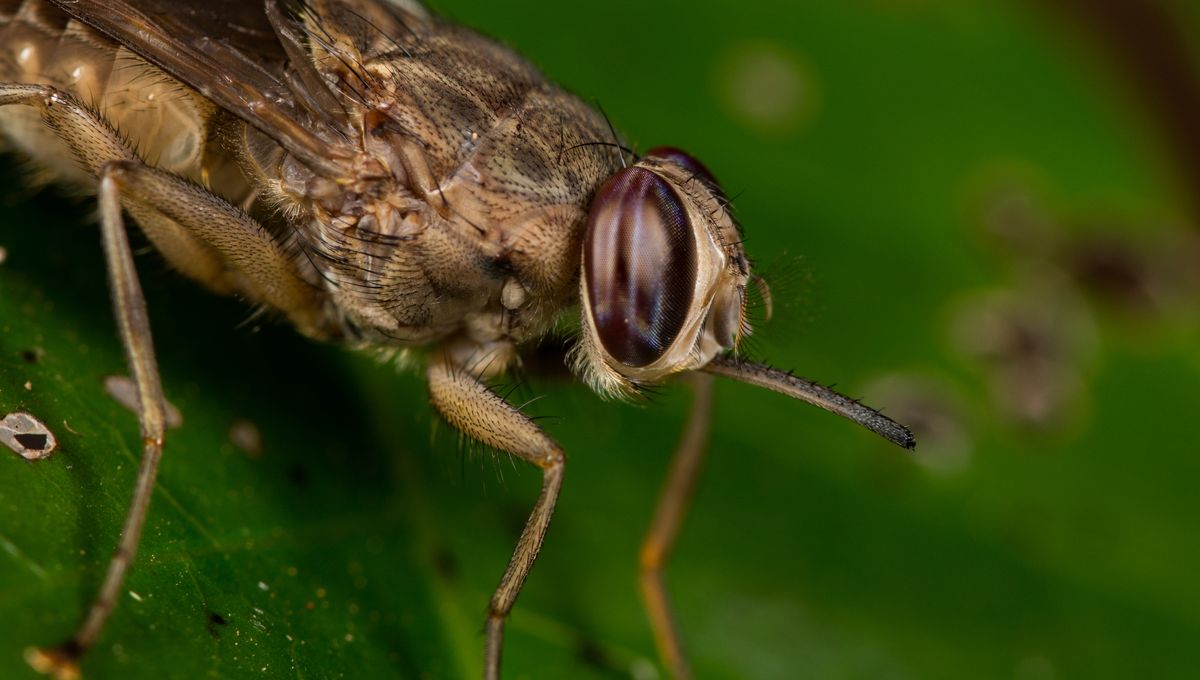
Day-biting flies are a menace to humans throughout the world, but scientists once discovered that they were attracted to blue objects and decided to implement this in fly traps. Now, a new study has discovered that these flies are only attracted to blue because they confuse the color for an animal they want to feast on.
For a long time, there have been many theories flying around about why these insects are attracted to the color blue. The first is that blue resembles animals to a fly. The second is that the flies mistake the blue for a shady area and a great place to rest. The third is that flies’ attraction to the color is a byproduct of a polarized light pull (which helps them to identify bodies of water).
One study decided to test the first and second theories using artificial neural networks (ANNs) that mimic the visual processing center in the brains of day-biting flies like horse, stable, and tsetse flies. The ANNs were trained using only the five types of photoreceptors that occur in the fly’s eyes.
Firstly, the researchers trained the ANNs to discriminate animals from leaves, but they found that the ANNs often misclassed blue objects as animals. This concurred with the first theory that these flies were attracted to the blue because it resembles animals.
The ANNs were then used to test the second theory that flies mistake the blue for shady areas. They found that the network discriminated between shaded and unshaded stimuli and never misclassified the blue objects as shaded. They mainly detected shade through a lack of brightness. This meant that day-biting flies were not attracted to blue because they thought it was a great place for a breather.
For many years, blue traps have been used as a control method for day-biting disease-carrying insects. For example, tsetse flies have long been targeted with simple but effective blue-colored traps that often contain insecticide to kill them.
Effective traps are essential – tsetse flies are amazing creatures, but also a horror to many. They feed exclusively on human and animal blood, give birth to live young (the size of which is equivalent to a human giving birth to a teenager), and provide nutrition to their young through lactation.
Tsetse flies are mainly found in Central Africa. Along with being bloodsuckers, they also are a vector of diseases – African animal trypanosomiasis (wild and domestic animals) and human African trypanosomiasis or sleeping sickness (humans). These flies carry the protozoa that cause the diseases and transmit them during a blood meal. These flies were so horrific that in the past they made parts of Africa uninhabitable because of their presence.
Past tsetse research also concurs that the flies are attracted to the color blue because they think it is a blood meal. Tsetse flies are often caught in these traps without any blood in them, which indicates that they have not eaten recently and are seeking their next meal.
So, if you are ever in an area that has diurnal biting flies, make sure you do not wear this particular shade of blue, otherwise, you are going to have a bad time!
The study is published in Proceedings of the Royal Society B: Biological Sciences.
Source Link: Biting Flies Are Attracted To Blue, Researchers Have Just Learned Why